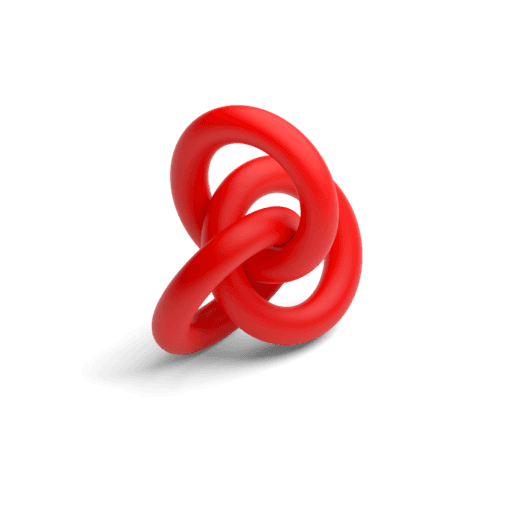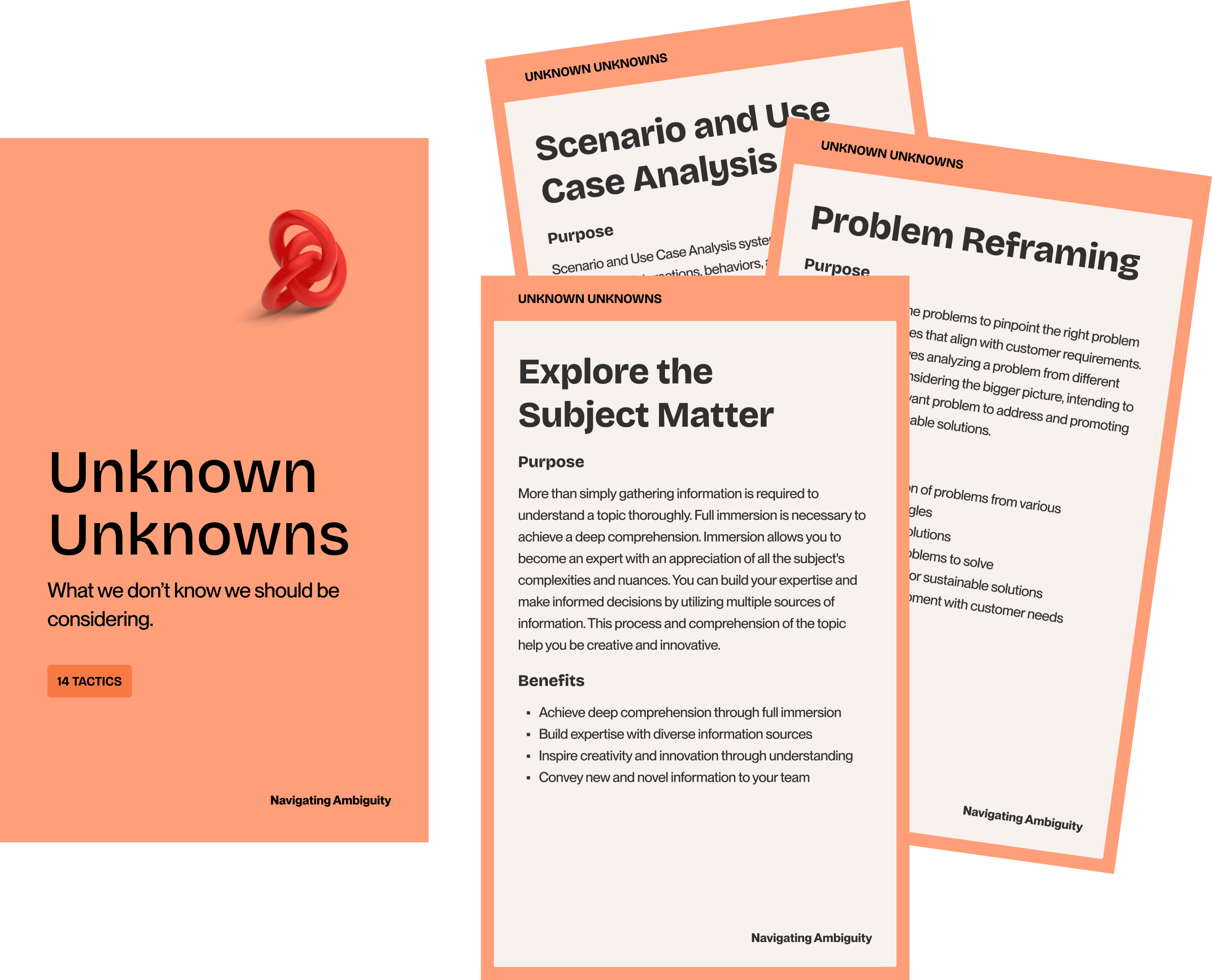Ambiguity is all about what we know and don’t know.
The Navigating Ambiguity toolkit classifies ambiguity into four categories based on levels of unknown information and serves as a tool to assist you in managing ambiguity in product development and design.

Known Knowns
What we clearly know and understand.
Known Knowns encompass readily understood data like user research, performance metrics, and market trends, serving as the foundation for informed decisions and strategies.

Known Unknowns
What we know, we need to find out.

Unknown Knowns
What we unconsciously know but haven’t applied.
Unknown Knowns refer to valuable knowledge we possess but may have yet to recognize or put into practice.

Unknown Unknowns
Unknown Unknowns refer to the hidden obstacles and potential advantages we may not know yet.
Free Guide
Download the free Context Setting for Product Teams Guide with over 120 actionable tips you can use to make an impact today!
Move forward when the path is unclear.
Ambiguity is a common challenge often faced by the best product teams. This toolkit will help you progress when you’re stuck or missing essential information.

This toolkit is for all skill levels.
This deck is suitable for designers and product managers at all levels of expertise who are creating digital products.



Novice to Intermediate
If you are new to product development or have some experience, these strategies can guide you in dealing with complex and uncertain situations. They enable you to develop essential problem-solving, decision-making, and risk-management skills.
Experienced Professionals
Experienced designers and product managers can use this toolkit to improve and expand current strategies. The tactics provide a problem-solving framework, especially when you feel stuck. They help you reassess and prevent biases.
What’s Included?
4 sets of cards (14-20 tactics each, 60+total)
32 pages
19 pages
5 pages
4 PDFs (15-22 pages each)
Buy now
Actionable information you can start using today.
Each tactic features a description outlining its purpose, a concise list of benefits, step-by-step instructions, and a section for reflection.
Over 60 tactics and 120 actionable tips.
Use any tactic as needed.
Although the organization of these tactics considers the mental frameworks and cognitive methods commonly used to make sense of situations or problems, there are no strict rules.
Practical uses.
You can use any tactic at any time. Here are some ideas for specific situations.
Project Initiation
Overcoming Obstacles
Team Alignment
Enhancing Collaboration
Post-Project Reflection
Stakeholder Engagement
Preparing for Change
Resource Management
Crisis Response
Skill Enhancement
Performance Evaluation
Goal Setting
Data Interpretation
Decision Making
FAQ
If you have any other questions - please get in touch.
What types of formats are available for the resources?

The toolkit includes a context-setting guide, workbook, how-to-use guide, tips, and digital card deck. The guide, workbook, how-to-use guide, and tips are available in PDF format, while the digital card deck is available as individual cards in JPG format and as a printable PDF.
Is this toolkit suitable for remote teams?

Absolutely! In fact, this kit is designed to work with remote teams. All the materials are digital and are easy to share in meetings or workshops.
Can I get a refund if I’m not satisfied?

Yes, we offer a 15-day money-back guarantee if you’re unsatisfied with the toolkit.
How do I access the toolkit after purchase?

Upon purchase from a trusted third-party hosted checkout, you’ll receive an email with a download link to access all the digital resources in the toolkit.
Is my payment information secure?

All transactions are encrypted using SSL technology through Lemon Squeezy, a hosted checkout platform.
Can I share the toolkit with my team?

You can share the toolkit materials and digital cards during meetings and workshops, but you are not allowed to distribute or share them outside of that context.
Are there any prerequisites for using this toolkit effectively?

The toolkit suits beginners and professionals; no prior knowledge is necessary.
Do you offer any bulk or team discounts?

Bulk discounts for purchases of multiple licenses are available. Please get in touch with us for more information.
What support is available if I have questions or issues?

Customer support is available; please get in touch with questions.
What is the permitted use of these materials?

You are permitted to use the materials for work, learning, and workshop sessions as long as they are not the only content of your course. It is not allowed to present the materials publicly, copy, distribute, resell, modify, or use them in derivative works. If you use the content, make sure to attribute the original creators. If you violate the license terms, it may result in the revocation of the license. Detailed License Information Permitted Uses Use the materials for work or learning. Conduct workshops with coworkers or students, but don’t use the materials as the sole course content. Always attribute the content to “Developed by Jess Eddy (jesseddy.com).” Note: this doesn’t imply endorsement of your usage. Prohibited Uses Please don’t use the material as a standalone training module or present it in public forums. Copying or distributing the purchased material is not allowed. Reselling or creating derivative works from this material is prohibited. Do not remove any copyright or ownership notices. Modifying, altering, or adapting the materials is not permitted. Violation of these terms may result in license revocation.





































